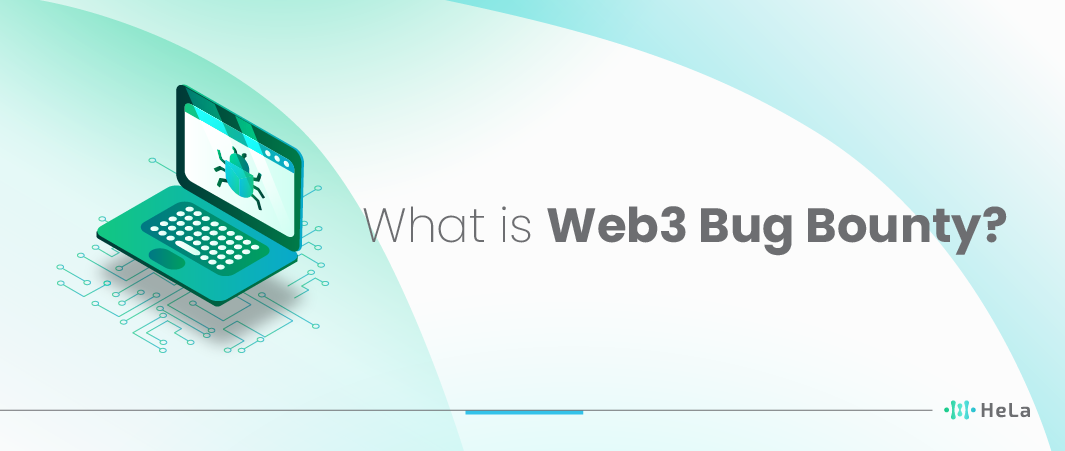Back
Bounty
Basics
By HackQuest
Aug 12,20244 min readWelcome to the world of Web3, where cryptocurrencies, blockchain, and a unique culture converge. Entering the world of Web3 can be both thrilling and overwhelming, especially when faced with the seemingly cryptic language used by enthusiasts. Don't worry if you feel they sound like some secret codes; we are here to unravel their meaning in the Web3 context. In this article, we are going to introduce "Bounty."
What is the Bounty?
In the context of Web3 and blockchain technology, a "bounty" refers to a reward offered for the completion of specific tasks or challenges. These tasks can range from identifying security vulnerabilities and developing software features to promoting a project or providing community support. Bounties are typically paid in cryptocurrency and serve as a decentralized way to incentivize and engage the community.
Bounties are a key part of the Web3 ecosystem, providing a mechanism for projects to leverage the skills and contributions of a global community. They help projects achieve their goals efficiently and cost-effectively while rewarding contributors for their efforts.

Source : helalabs
Origin of the Bounty
The concept of bounties is not new and has been used in various forms throughout history. Traditionally, bounties were offered as rewards for capturing criminals or completing dangerous tasks. In the world of software development, bounties became popular with the rise of open-source projects, where developers were rewarded for contributing code or finding bugs.
In the cryptocurrency space, the use of bounties gained traction with the launch of early blockchain projects like Bitcoin and Ethereum. These projects needed to incentivize community participation and secure their networks. Offering bounties in the form of their native tokens was an effective way to achieve these goals.

Sources : CrypticOcean
How is the Term Being Used in Crypto?
In the crypto space, the term "bounty" is used in several contexts:
1.Bug Bounties: These are rewards offered to security researchers and developers for identifying and reporting vulnerabilities in a blockchain or cryptocurrency project. Bug bounties are essential for maintaining the security and integrity of the network. For example, major platforms like Ethereum and Binance run bug bounty programs to continuously improve their security.
2.Development Bounties: Projects often use bounties to incentivize developers to build new features, improve existing code, or create dApps (decentralized applications) on their platforms. This approach helps in expanding the ecosystem and enhancing the project's functionality.
3.Marketing and Community Bounties: These bounties are offered for tasks related to promoting the project, such as writing articles, creating videos, managing social media accounts, or organizing events. Community bounties help in raising awareness and building a strong user base.
4.Testing and Feedback Bounties: Projects may offer bounties for testing new features or providing feedback on user experience. This helps in refining the product before its official release.
Examples of Bounties in Action
1.HackerOne and Gitcoin: Platforms like HackerOne and Gitcoin facilitate bounty programs for blockchain projects. HackerOne focuses on security bounties, while Gitcoin supports a wide range of tasks, including development, design, and community management.
2.Ethereum: The Ethereum Foundation has run multiple bounty programs to enhance its security and development. For instance, it has offered substantial rewards for identifying critical bugs in its protocol.
3.Binance: Binance, one of the largest cryptocurrency exchanges, runs an active bug bounty program, offering rewards to security researchers who help identify vulnerabilities in its platform.
Source : Linkedin
Benefits of Bounties in the Web3 Ecosystem
1.Decentralized Collaboration: Bounties enable projects to tap into a global pool of talent, fostering collaboration without geographical constraints. This decentralized approach aligns with the core principles of blockchain technology.
2.Cost-Effectiveness: By offering bounties, projects can achieve their goals without hiring full-time employees. This reduces operational costs while ensuring that tasks are completed by skilled individuals.
3.Community Engagement: Bounties incentivize community members to actively contribute to the project, fostering a sense of ownership and loyalty. Engaged communities are crucial for the success and longevity of blockchain projects.
4.Continuous Improvement: Bounty programs encourage continuous testing, development, and feedback, ensuring that the project evolves and adapts to new challenges and opportunities.
Conclusion
Bounties play a vital role in the Web3 ecosystem, offering a decentralized and efficient way to incentivize community contributions. Whether it’s securing a network, developing new features, promoting a project, or gathering user feedback, bounties help projects achieve their objectives while rewarding participants for their efforts.
Understanding the concept of bounties and how they are used in the cryptocurrency space is essential for anyone looking to engage with blockchain projects. By participating in bounty programs, individuals can contribute to the growth and success of the Web3 ecosystem while earning cryptocurrency rewards.
As the Web3 landscape continues to evolve, the importance of bounties will only grow, fostering innovation, collaboration, and community engagement in the world of digital assets and decentralized technologies. Whether you are a developer, a marketer, a security researcher, or an enthusiast, there are countless opportunities to contribute to and benefit from the bounty programs in the Web3 space.